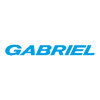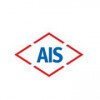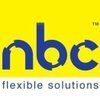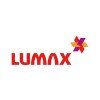Filter interviews by
Ppap Automotive Interview Questions and Answers
20 Interview questions
In my previous role, I managed PPC campaigns, optimizing ad spend and improving ROI through data-driven strategies.
Managed a monthly budget of $10,000 for Google Ads, achieving a 25% increase in conversions.
Conducted A/B testing on ad copy, leading to a 15% improvement in click-through rates.
Utilized analytics tools like Google Analytics and SEMrush to track performance and adjust strategies.
Collaborated with the ...
QC tools are techniques used to monitor and improve quality in processes and products.
Check Sheets: Used for data collection and analysis, e.g., tracking defects in a manufacturing process.
Control Charts: Help monitor process stability over time, e.g., tracking the temperature in a production line.
Pareto Charts: Identify the most significant factors in a dataset, e.g., determining the most common types of defects.
...
A Henry low refers to a specific low-pressure condition in a system, often related to fluid dynamics or thermodynamics.
Henry's law states that the amount of gas dissolved in a liquid is proportional to the pressure of the gas above the liquid.
Example: Carbonated beverages have high pressure of CO2, leading to more gas dissolved in the liquid.
In environmental science, it helps in understanding how pollutants behave...
Thermocouples and RTDs are temperature sensors with distinct operating principles and applications.
Thermocouples generate a voltage based on temperature difference, while RTDs measure resistance changes with temperature.
Thermocouples are suitable for high-temperature applications (up to 2000°C), e.g., in furnaces.
RTDs provide higher accuracy and stability, typically used in industrial processes, e.g., in HVAC syst...
First angle and third angle are two different methods of representing orthographic projections in engineering drawings.
First angle projection is commonly used in Europe and Asia, where the object is placed in the first quadrant of the projection plane. The views are obtained by projecting the object onto the planes of projection.
Third angle projection is commonly used in North America, where the object is placed i...
There are three main types of lathe operations: facing, turning, and boring.
Facing: Removing material from the end of a workpiece to create a flat surface.
Turning: Removing material from the outer diameter of a workpiece to create a cylindrical shape.
Boring: Enlarging an existing hole in a workpiece.
Vernier caliper is a measuring tool used to measure the dimensions of an object with high accuracy.
Clean the jaws and ensure they are parallel
Close the jaws and check if the zero on the vernier scale aligns with the zero on the main scale
Open the jaws and place the object between them
Read the main scale value closest to the object's edge
Read the vernier scale value that aligns with the main scale value
Add the main...
The process of new tool making on CNC milling machine involves several steps.
Designing the tool using CAD software
Selecting the appropriate material for the tool
Creating a toolpath using CAM software
Setting up the CNC milling machine
Machining the tool using the CNC milling machine
Inspecting and testing the tool for accuracy and quality
To handle a new product in the after-market with no presence, a strategic approach is needed.
Conduct market research to understand customer needs and preferences
Develop a comprehensive marketing plan to create awareness and generate demand
Establish partnerships with distributors or retailers to reach the target market
Offer incentives or promotions to encourage customers to try the new product
Monitor customer feedb...
An engine is a machine that converts fuel into mechanical energy to power vehicles or machinery.
Engines come in various types such as gasoline, diesel, electric, and hybrid.
They are used in cars, trucks, airplanes, boats, and generators.
Engines work by igniting fuel and air mixture to create a controlled explosion that moves pistons and generates power.
Regular maintenance is required to keep engines running effici...
Ppap Automotive Interview Experiences
37 interviews found
Mechanical Design and Development Engineer Interview Questions & Answers
posted on 3 Mar 2025
(5 Questions)
- Q1. Type measurement instrument
- Q2. Type of machining process
- Ans.
Machining processes involve removing material from a workpiece to create the desired shape and size.
Common machining processes include turning, milling, drilling, and grinding
Turning involves rotating the workpiece while a cutting tool removes material
Milling uses a rotating cutter to remove material from the workpiece
Drilling creates holes in the workpiece using a rotating drill bit
Grinding uses an abrasive wheel to r...
- Q3. Different between first angle and third angle
- Ans.
First angle and third angle are two different methods of representing orthographic projections in engineering drawings.
First angle projection is commonly used in Europe and Asia, where the object is placed in the first quadrant of the projection plane. The views are obtained by projecting the object onto the planes of projection.
Third angle projection is commonly used in North America, where the object is placed in the...
- Q4. Types of cutting
- Ans.
Types of cutting include abrasive cutting, chipless cutting, and shear cutting.
Abrasive cutting involves using abrasive particles to cut materials.
Chipless cutting involves using tools to deform materials without creating chips.
Shear cutting involves using shear forces to cut materials.
Examples include laser cutting, waterjet cutting, and guillotine cutting.
- Q5. How many kinds of lath operation
- Ans.
There are three main types of lathe operations: facing, turning, and boring.
Facing: Removing material from the end of a workpiece to create a flat surface.
Turning: Removing material from the outer diameter of a workpiece to create a cylindrical shape.
Boring: Enlarging an existing hole in a workpiece.
(2 Questions)
- Q1. Technical questionsany questions
- Q2. Non technical questions
(1 Question)
- Q1. Any questions technical and non technical
Interview Preparation Tips
This company work is very narmal
I appeared for an interview in May 2025, where I was asked the following questions.
- Q1. Abour Previous job
- Ans.
In my previous role, I managed PPC campaigns, optimizing ad spend and improving ROI through data-driven strategies.
Managed a monthly budget of $10,000 for Google Ads, achieving a 25% increase in conversions.
Conducted A/B testing on ad copy, leading to a 15% improvement in click-through rates.
Utilized analytics tools like Google Analytics and SEMrush to track performance and adjust strategies.
Collaborated with the conte...
- Q2. Related to ppc
I appeared for an interview in Apr 2025, where I was asked the following questions.
- Q1. What is the relieving policy in your organization?
- Ans.
Relieving policy outlines the process and conditions under which an employee can leave the organization, ensuring smooth transitions.
Notice Period: Employees are typically required to give a notice period of 30 days before leaving, allowing time for knowledge transfer.
Exit Interviews: Conducting exit interviews helps gather feedback and understand reasons for leaving, which can improve retention strategies.
Final Settle...
- Q2. What is the salary policy?
- Ans.
A salary policy outlines how an organization determines employee compensation, ensuring fairness and competitiveness in the market.
Market Competitiveness: Salary policies are often based on market research to ensure that compensation is competitive with similar roles in the industry.
Performance-Based Pay: Many organizations incorporate performance metrics into their salary policies, rewarding high performers with bonus...
Quality Assurance Quality Control Engineer Interview Questions & Answers
posted on 3 Jun 2025
- Q1. What is Quality?
- Q2. What is Qc?
- Q3. What is QA?
Graduate Engineer Trainee (Get) Interview Questions & Answers
posted on 11 Nov 2024
(1 Question)
- Q1. Introduce yourself
(1 Question)
- Q1. Internship experience and project working
I applied via Campus Placement and was interviewed in Mar 2024. There were 2 interview rounds.
(2 Questions)
- Q1. Self Introduction
- Q2. Some basic knowledge about Plastic
(1 Question)
- Q1. Machines Knowledge
Interview Preparation Tips
(1 Question)
- Q1. Manufacturing tools and si Die
(2 Questions)
- Q1. Fifo & lifo concept
- Ans. First in first out , last in first out
- Q2. Perpetual inventory
- Ans. A continuous accounting practices that record inventory change in real time without the need for physical inventory so the book inventory accurately show the real stock
I applied via Campus Placement and was interviewed in Mar 2023. There were 4 interview rounds.

They were asking about chandrayan 3
Aptitude test questions related to battery just like v=ir
(5 Questions)
- Q1. Transformers related And ac and DC current Mcb and mccb Relay and so on
- Q2. About primary winding and secondary winding
- Q3. Why do we use alternate current in industrial area
- Q4. Why dowe use dc current
- Q5. What is transformer
Top trending discussions






Ppap Automotive Interview FAQs
The duration of Ppap Automotive interview process can vary, but typically it takes about less than 2 weeks to complete.
Tell us how to improve this page.
Ppap Automotive Interviews By Designations
- Ppap Automotive Quality Engineer Interview Questions
- Ppap Automotive Graduate Engineer Trainee (Get) Interview Questions
- Ppap Automotive Engineer Interview Questions
- Ppap Automotive Diploma Trainee Engineer Interview Questions
- Ppap Automotive Production Engineer Interview Questions
- Ppap Automotive Management Trainee Interview Questions
- Ppap Automotive Graduate Engineer Interview Questions
- Ppap Automotive Team Leader (Technical) Interview Questions
- Show more
Interview Questions for Popular Designations
- Senior Executive Interview Questions
- Analyst Interview Questions
- Software Developer Interview Questions
- Senior Engineer Interview Questions
- Graduate Engineer Trainee (Get) Interview Questions
- Associate Software Engineer Interview Questions
- System Engineer Interview Questions
- Senior Software Engineer Interview Questions
- Show more
Overall Interview Experience Rating
based on 26 interview experiences
Difficulty level
Duration
Interview Questions from Similar Companies
Ppap Automotive Reviews and Ratings
based on 421 reviews
Rating in categories
|
Engineer
107
salaries
| ₹2.9 L/yr - ₹5.8 L/yr |
|
Assistant Engineer
70
salaries
| ₹2 L/yr - ₹3.6 L/yr |
|
Production Engineer
68
salaries
| ₹2.2 L/yr - ₹5.2 L/yr |
|
Assistant Manager
62
salaries
| ₹5.9 L/yr - ₹10 L/yr |
|
Graduate Engineer Trainee (Get)
49
salaries
| ₹1.8 L/yr - ₹3.4 L/yr |

JBM Group

Subros
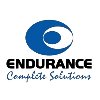
Endurance Technologies

Spark Minda
- Home >
- Interviews >
- Ppap Automotive Interview Questions



